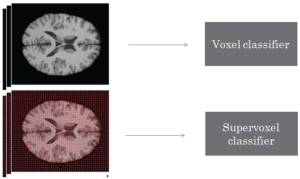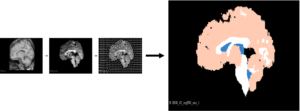About

Since 2011, I am a fully involved student at FIIT STU. In 2016, I started my PhD studies in field of Computer vision and Medical image processing under supervision of assoc. prof. Wanda BeneÅ¡ová, PhD. Before that, I finished my Master’s and Bachelor degree in fields of Informatics and Information Technologies.
I am a big fantasy fan – every story concerning Middle Earth, Alagaësia1, Hogwarts , The Seven Kingdoms or Errea2 is definitely going to attract my attention. Besides that I try to come with my own fictious world. To date it is mostly only in my head, but I am sure one day more people will be invited to enter.
1 Well, yes, the movie was terrible.
2 You don’t know Errea? Good, one day you will 😉
Research
Research areas:Â computer vision, medical image processing, segmentation and oversegmentation, ML and deep learning in medical imaging.
Oversegmentation
Convolutional neural networks (CNNs) are a great step for the whole medical image processing. Nevertheless, there’s certainly a space for improvement. I believe that (besides other means) preprocessing could help CNNs to achieve better results in shorter time. Oversegmentation of medical data before the deep learning is applied will in my opinion come with benefits. Therefore, we’ve recently came up with a new supervoxel algorithm specifically designed for medical image processing. The main benefit of supervoxels is that instead of hundreds-of-thousands to tens-of-millions of voxels, we can feed neural network with a set of supervoxels which consist of only a fraction of this amount.

In my Master’s thesis I successfully applied supervoxels in conjunction with neural network to perform segmentation of brain volumetric images from MRI. In this case I used handcrafted features based on texture, intensity and spatial information in order to describe individual supervoxels. The method (link) consists basically of these steps: preprocessing, supervoxelization (oversegmentation), neighbourhood identification, feature extraction, training of MLP.

Publications
Papers
- TAMAJKA, Martin; BENESOVA, Wanda; KOMPANEK, Matej. Transforming Convolutional Neural Network to an Interpretable Classifier. In:Â 2019 International Conference on Systems, Signals and Image Processing (IWSSIP). IEEE, 2019. p. 255-259. (link)
- GRIVALSKY, Stefan; TAMAJKA, Martin; BENESOVA, Wanda. Segmentation of gliomas in magnetic resonance images using recurrent neural networks. In:Â 2019 42nd International Conference on Telecommunications and Signal Processing (TSP). IEEE, 2019. p. 539-542. (link)
- KOMPANEK, Matej; TAMAJKA, Martin; BENESOVA, Wanda. Volumetric Data Augmentation as an Effective Tool in MRI Classification Using 3D Convolutional Neural Network. In: 2019 International Conference on Systems, Signals and Image Processing (IWSSIP). IEEE, 2019. p. 115-119. (link)
- TAMAJKA, Martin; BENEÅ OVÃ, Wanda. Supervoxel algorithm for medical image processing. In:Â 2017 IEEE International Conference on Power, Control, Signals and Instrumentation Engineering (ICPCSI). IEEE, 2017. p. 3121-3127. (link)
- TAMAJKA, Martin; BENESOVA, Wanda. Automatic brain segmentation method based on supervoxels. In:Â Systems, Signals and Image Processing (IWSSIP), 2016 International Conference on. IEEE, 2016. p. 1-4. (link)
Student research conference papers
- Low-Cost Acquisition of 3D Interior Models for Online Browsing. In BIELIKOVÃ, M. IIT.SRC 2014: Student research conference. 10th Students research conference in informatics and information technologies Bratislava, April 29, 2014. Proceedings. 1. vyd. Bratislava : Nakladateľstvo STU, 2014, s. 337–342. ISBN 978-80-227-4153-8.
Theses
- Segmentation of Anatomical Organs in Medical Data.
Tamajka, Martin; Benešová, Wanda. Diploma thesis. Bratislava: FIIT STU, 2016. (link) - Innovative Application Within an International Competition.
Tamajka, Martin; Šimko, Jakub. Bachelor thesis. Bratislava: FIIT STU, 2014.
Teaching
- Development of web applications in cloud environment (Teaching Assistant)
- Team project (Supervisor)
- Computer vision (Teaching Assistant)
- Digital signal processing, graphics and multimedia (Teaching Assistant)